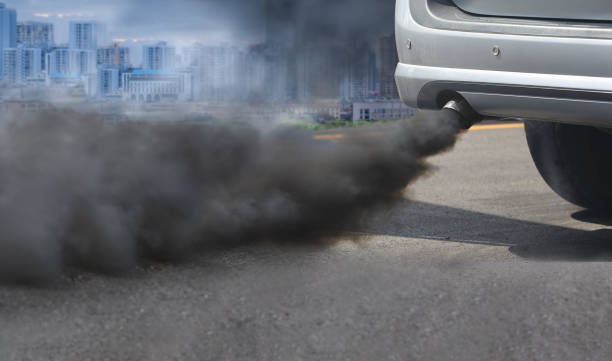As of November 7, 2024, Dhaka, the capital city of Bangladesh, ranks as the sixth most polluted city globally, recording an Air Quality Index (AQI) score of 165. This level of air pollution categorizes Dhaka’s air as ‘unhealthy,’ posing serious health risks to its residents. An AQI reading between 150 and 200 is considered harmful to the general population, especially vulnerable groups such as children, the elderly, and those with respiratory conditions. On the same day, Delhi, Lahore, and Hanoi ranked first, second, and third on the global pollution scale, with significantly higher AQI scores, indicating severe air quality issues across South Asia.
Understanding Dhaka’s AQI and its Health Implications
The AQI, or Air Quality Index, serves as a daily indicator of how polluted or clean the air is in a particular region. In Dhaka, the AQI is primarily determined by five pollutants: particulate matter (PM10 and PM2.5), nitrogen dioxide (NO2), carbon monoxide (CO), sulfur dioxide (SO2), and ozone. Among these, PM2.5 particles—tiny particles with a diameter less than 2.5 micrometers—are particularly hazardous as they penetrate deep into the lungs and can even enter the bloodstream, leading to respiratory and cardiovascular issues.
An AQI score between 101 and 150 is ‘unhealthy for sensitive groups,’ while a score from 151 to 200, such as Dhaka’s current reading, is labeled as ‘unhealthy’ for the general public. Higher AQI levels, ranging from 201 to 300, are considered ‘very unhealthy,’ while anything above 301 is deemed ‘hazardous.’ At this hazardous level, prolonged exposure can lead to serious health conditions, including aggravated asthma, chronic respiratory disease, lung infections, and increased mortality due to stroke, heart disease, and respiratory illnesses.
Causes of Dhaka’s Persistent Air Pollution
Several factors contribute to Dhaka’s severe air quality issues. Rapid urbanization, coupled with insufficient regulatory control over emissions, has led to increased pollution from vehicular emissions, industrial activities, and construction dust. Dhaka’s growing population exacerbates the issue, creating high demand for transportation, energy, and construction, which significantly contribute to air pollution.
During winter, air quality worsens as weather patterns trap pollutants closer to the ground. In contrast, the monsoon season usually improves air quality due to rainfall, which helps settle airborne particles. Despite temporary improvements, Dhaka’s air pollution has consistently worsened over the years, highlighting the urgent need for effective, long-term solutions.
Global Comparison and Regulatory Gap
Compared to neighboring countries, Dhaka’s air quality continues to lag behind cities that have implemented more robust environmental policies. In India, for instance, strict regulations require emission controls and the promotion of clean energy alternatives, especially in cities like Delhi, which still struggles with extreme pollution levels despite these measures. Similarly, cities in Vietnam and Pakistan have begun implementing policies to mitigate air pollution, though these efforts have not fully addressed the issue. Bangladesh, however, lacks comprehensive regulations to tackle emissions effectively, allowing pollution levels to persist, especially in highly populated urban areas.
Health and Environmental Impact
Poor air quality in Dhaka poses significant health risks. The World Health Organization (WHO) estimates that air pollution contributes to around seven million premature deaths globally each year, with many fatalities resulting from diseases linked to pollution, such as stroke, heart disease, chronic obstructive pulmonary disease, and lung cancer. In Dhaka, people living in densely populated areas and near traffic-dense zones face the highest risk, with a higher prevalence of respiratory illnesses reported.
Towards Cleaner Air: Recommendations for Dhaka
Improving air quality in Dhaka requires a multi-faceted approach involving government action, public awareness, and regulatory measures. Immediate steps include implementing stricter emissions standards for vehicles and industries, promoting green public transportation, and enforcing regulations that limit dust from construction sites. Expanding green spaces within the city and encouraging the use of renewable energy sources are also effective ways to reduce pollution. Additionally, raising public awareness of air pollution’s health risks can motivate collective efforts to reduce emissions, especially during the winter when pollution levels spike.
Conclusion
Dhaka’s ranking as the sixth most polluted city globally, with an AQI score of 165, underscores the urgent need for action to improve air quality. With pollution levels frequently reaching unhealthy levels, Dhaka’s residents face increased health risks, particularly regarding respiratory and cardiovascular diseases. While some seasonal relief occurs during the monsoon, the long-term solution lies in developing sustainable policies, stricter emissions regulations, and public engagement in environmental preservation. Addressing Dhaka’s air pollution crisis is essential for public health and fostering a more sustainable urban environment in Bangladesh.




